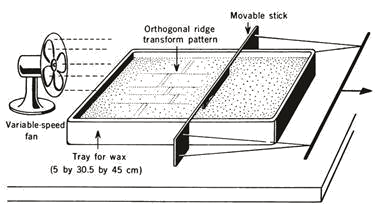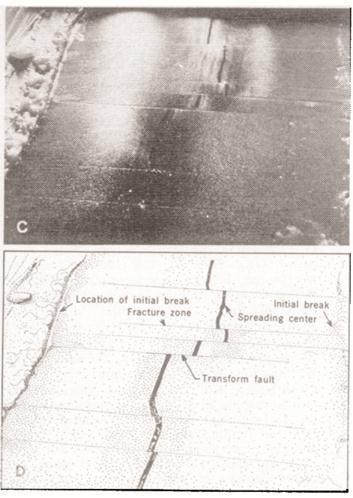CPT Q. 038: If Africa was largely stationary, does this mean the Mid-Atlantic Ridge moved westward?

Q. 38. The African Plate is generally assumed to be relatively stable with regard to its east-west movement. Does this mean that the Mid-Atlantic Ridge itself is moving westward at half the speed of the Atlantic seafloor west of the ridge? If so, why do standard textbooks show a thermal plume of mantle material ascending at the Mid-Atlantic Ridge and spreading symmetrically both west and east, implying the Ridge is stationary?
Response: That the Mid-Atlantic Ridge itself is moving westward at half the speed of the North American Plate, including the Atlantic seafloor west of the ridge is the standard understanding today, both in the CPT framework and according to conventional plate tectonics. Unfortunately, as you point out, the explanation still found in many textbooks of a thermal plume of mantle material ascending at the Mid-Atlantic Ridge and spreading symmetrically both to the west and to the east (toward Africa) is out of date—by about 40 years! The response I provided to question 18 included a description of a set of laboratory experiments reported in 1972 which shed some extremely important light on this topic. The experiments involved the use of molten wax to investigate on a laboratory scale the mechanics of how a medium consisting of a brittle upper layer and a ductile lower layer deforms when pulled apart. The classic paper is by Oldenburg and Brune, “Ridge transform fault spreading pattern in molten wax.”1 I reproduce the key figure from their paper which shows the apparatus and basic results of their experiment.


What this experiment and many similar ones since reveal is that the essential physics responsible for the segmented ridge/transform fault geometry is the presence of a strong brittle upper layer and a much weaker ductile lower layer, with surface cooling causing the brittle layer to thicken with time, yet with sufficient spreading motion to keep the divergent zone weak by replenishment with hot ductile material from below. To the extent that this experiment represents an analog to ridge tectonics on the earth, the authors conclude that
“spreading ridges may be formed under the influence of tensile stresses only, and forces from an active convection cell located beneath the ridge axis are not required (emphasis added).”
Let me here stress that subsequent observation strongly confirms that this generally is the case for the earth—that mid-ocean ridges are mainly the product of the divergent motion of the plates on either side and not a result of the upwelling limb of a convection cell below. In other words, the spreading ridges are largely passive features—the result of plate divergence. As you point out, this is very much contrary to many popular characterizations of plate tectonics concepts, even in current textbooks. Also, it is helpful to note that in the experiments described above, the stiff upper layer of wax is being pulled from one side only; the weak zone where the spreading takes place moves to the right at very close to half the speed at which the stick is being drawn to the right.
-
D. W. Oldenburg and J. N. Brune, “Ridge transform fault spreading pattern in molten wax,” Science 178, 301-304, 1972. ↩︎